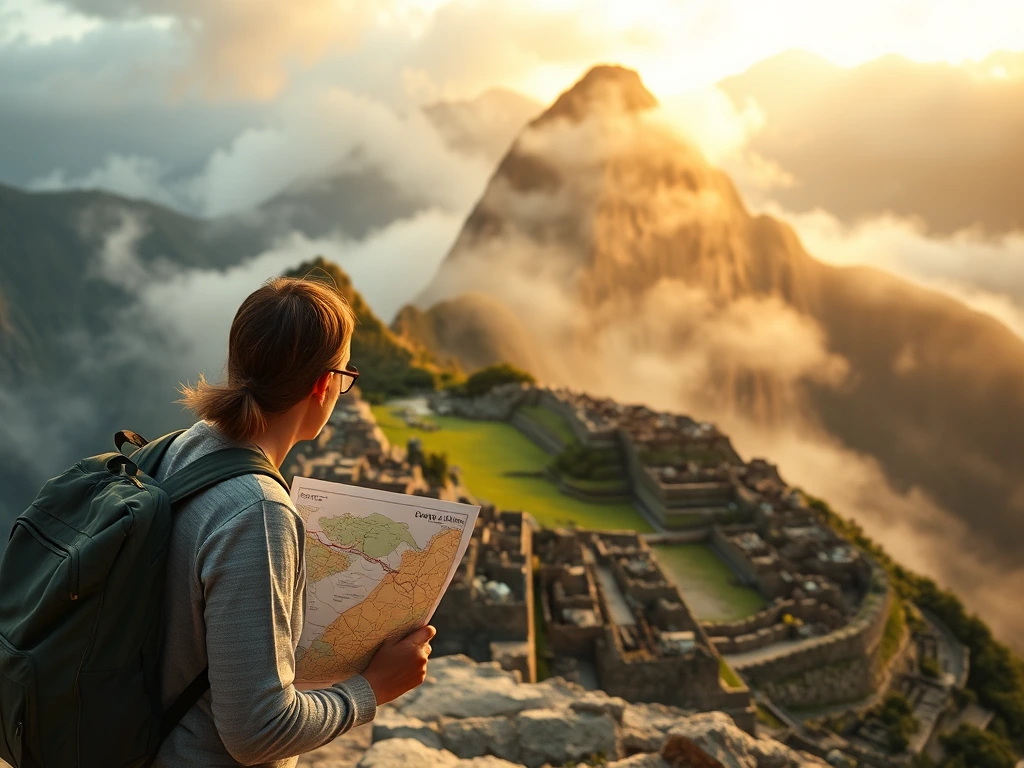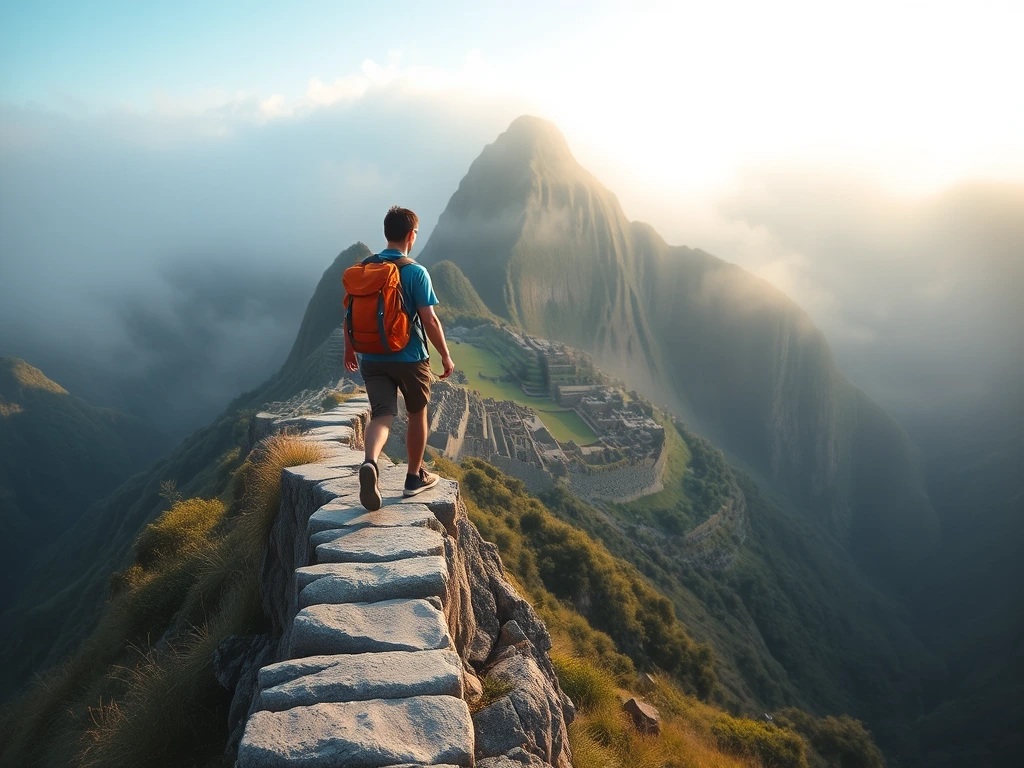If you’ve seen alarming headlines, viral TikToks, or travel-forum whispers saying “Machu Picchu is closing,” take a breath. The iconic Inca citadel remains open in 2025, welcoming travelers on a regulated, circuit-based system designed to protect the site and improve the visitor experience. What is changing—and what’s fueling the rumors—are updated government capacity rules, dynamic high/low season ticket allotments, and mandatory timed-entry circuits that limit where, when, and how long you can explore. Planning smart (and early) matters more than ever. Below you’ll find the clearest, most up-to-date breakdown of the truth behind the closure rumors, the official visitor caps, and how the new Machu Picchu circuits work—plus insider guidance tailored to U.S. luxury and upper–middle‑class travelers who value seamless logistics, comfort, and access to the best vantage points. Throughout, we’ll gently show you where partnering with a trusted Peru-based luxury operator like Ile Tours can remove the guesswork, secure hard‑to‑get tickets, and elevate your once‑in‑a‑lifetime journey. |
Current Status (July 22, 2025): Machu Picchu Is Open
| Official Position: No Permanent Closure Announced |
Peru’s Ministry of Culture has not announced any permanent closure of Machu Picchu for 2025. Recent statements reaffirm that the site remains operational under controlled capacity rules intended to safeguard the archaeological complex. Rumors circulating online about indefinite shutdowns or dramatic cutbacks in access are not supported by official policy. Government communications and travel-industry updates confirm that the established daily visitor limits—4,500 in low season and up to 5,600 in high season or select peak dates—remain in force while authorities continue long‑term carrying‑capacity studies. These dynamic caps help spread demand across the calendar and across different site circuits, reducing crowd pressure in the most fragile zones. Occasional temporary disruptions—due to extreme weather, strikes affecting rail service, or scheduled trail maintenance—do happen in the region (for example, seasonal closures on parts of the Inca Trail system or short suspensions of train operations after landslides). These limited events often spark viral “Machu Picchu is closed!” chatter even when the citadel itself remains open. Working with on‑the‑ground experts helps you interpret headlines correctly and pivot if needed. |
Where the Closure Rumors Come From
| Top Rumor Triggers & What They Really Mean |
|
What Is Changing: The Circuit & Timed-Entry System
| From Free‑Roam to Managed Experience |
To reduce bottlenecks and protect fragile architecture, Peru redesigned the way travelers move through Machu Picchu. As of June 1, 2024, visits are organized into three main circuits—Panoramic (1), Classic (2), and Royalty (3)—subdivided into 10 total routes. Each ticket ties you to a specific circuit, entry window, and allowable path through the monument. You can’t freely roam between circuits once inside. Circuits are carefully engineered to disperse crowds: upper‑terrace photo viewpoints are separated from in‑depth explorations of the main urban core, and high‑effort add‑ons like Huayna Picchu, Machu Picchu Mountain, Inti Punku, and Huchuy Picchu are tied to specific route codes. Choosing the wrong circuit can mean missing that bucket‑list postcard shot—or, conversely, spending limited time hiking when what you really wanted was to walk the Temple of the Sun. Entry is strictly timed. Tickets specify a start hour; late arrivals risk denial. Published guidance indicates a limited tolerance window (longer in high season than low), and all visitors must exit by approximately 5:30 p.m. local time. Selecting the right slot matters—especially if you’re connecting from luxury rail services, private transfers from the Sacred Valley, or acclimatization stays in Cusco. Because circuit changes, capacity resets, and ticket release calendars shift year to year, premium operators closely monitor official updates from the Ministry of Culture and the Machupicchu site administration so their guests don’t get caught by policy or platform changes. Ile Tours maintains active relationships with on‑site authorities and transportation partners to secure the most appropriate circuits for your travel style. |
Machu Picchu Circuits at a Glance: Which One Is Right for You?
| Choose Based on Views, Depth, Effort & Time |
Here’s a quick‑comparison guide to the three circuit families and their sub‑routes. If you’re short on time, photography‑driven, traveling with kids, craving the “classic postcard,” or eager for a deeper archaeological walk, there’s a circuit for you. Booking the correct one in advance is the #1 way to avoid disappointment.
Not sure which circuit matches your mobility, interests, or photography goals? Ile Tours pre‑screens your preferences—altitude tolerance, how much walking you enjoy, whether sunrise light matters to you—and secures the corresponding circuit before it sells out. This is especially valuable for couples on milestone trips, families juggling kids’ energy levels, and travelers combining Machu Picchu with Amazon or Lake Titicaca extensions. |
Daily Visitor Limits & Seasonal Aforos: What the Numbers Mean
| Understanding 4,500 vs. 5,600 Visitors Per Day |
Peru uses a dynamic capacity model for Machu Picchu. In low season, the cap is set at 4,500 visitors per day. During high season and designated peak dates (such as mid‑year holidays or major travel periods), the site can receive up to 5,600 visitors per day, distributed across the 10 circuit routes. These thresholds are grounded in Ministry of Culture resolutions tied to conservation studies and periodically reviewed. Confusion often arises when travelers see one number quoted without its seasonal context. Remember: you may see reduced availability on certain dates even within a season if quotas for specific circuits (like 2B Classic or 3A Huayna Picchu) sell out ahead of other routes. That doesn’t mean the site is closed—it means demand outpaced supply for that circuit. Recent media attention around exaggerated or speculative capacity proposals (e.g., unfounded claims of a 27,000‑visitor limit) prompted formal clarification from the Ministry: such numbers are “completely inviable,” and the current 4,500 / 5,600 framework remains the operational standard pending updated technical studies. |
Ticket Release Calendar & Advance Booking Strategy
| When (and How Far Ahead) to Buy |
For the 2025 travel year, the Ministry of Culture staged ticket releases in seasonal blocks—initial sales for early‑January visitation opened on December 19, 2024, followed by rolling releases by month in early January 2025. This structured calendar lets travelers (and agencies) lock in high‑demand circuits months in advance. Primary sales flow through the official government platform tuboleto.cultura.pe, where you select your date, circuit, and entry hour. Limited in‑person allocations—about 1,000 next‑day tickets—are held for sale in Cusco and Machu Picchu Pueblo, but lines can be long and availability unpredictable; relying on walk‑up sales is risky in peak months. Luxury and time‑sensitive travelers overwhelmingly benefit from booking through a vetted Peru operator that monitors release drops, grabs preferred circuits the moment they load, bundles rail and hotel space, and handles passport data entry without error. Ile Tours can also manage fallback dates, dual‑circuit combos (e.g., 2B + 3A on consecutive days), and altitude‑friendly pacing if you’re arriving from sea level. |
Entry Windows, Tolerance & Time on Site
| Don’t Miss Your Slot—Timing Is Strict |
Each Machu Picchu ticket is tied to a specific entry hour block. Arrive within that window; outside it, admission is not guaranteed. Official guidance and operator briefings indicate a limited grace period—typically ~30 minutes in low season and up to ~45 minutes in high season—but you shouldn’t count on the buffer. Plan train arrivals and bus boarding with a margin. Once inside, maximum visit duration varies by circuit. Short panoramic routes may take ~2–3 hours; longer combos with mountain add‑ons can run 4+ hours (Huayna Picchu and Great Cave variants can stretch further depending on pace). All circuits must clear the site by roughly 17:30 (5:30 p.m.) local time. If you’re investing in private guides, photographers, or special‑access experiences, coordinating an early‑morning slot after an overnight in the Sacred Valley—or a premium train + lodge combo—can maximize light, crowd flow, and stamina at altitude. Ile Tours designs itineraries that “ladder” acclimatization nights in Cusco or Urubamba before your entry window, reducing fatigue and improving photos. |
Luxury Traveler Playbook: How to Experience Machu Picchu Without the Stress
| Premium Logistics, Smart Sequencing & Insider Access |
Ile Tours specializes in private, fully hosted Peru itineraries that align acclimatization, rail class, luggage handling, oxygen support (upon request), and bilingual expert guides across your Machu Picchu days. If you want the photography, archaeology, and comfort without navigating government booking portals at 2:00 a.m., we’ll handle it. |
Practical FAQs (2025 Edition)
| Your Most Common Questions—Answered Briefly |
Is Machu Picchu open year‑round? Yes, the citadel operates daily (entry 6:00 a.m.–approx. 5:30 p.m.), subject to weather or exceptional events. Do I need a guide? While enforcement can vary, official recommendations and conservation best practice strongly favor entering with an authorized guide—especially under the circuit system—to stay on route and maximize learning time. Many premium travelers include private guiding as standard. Can I change circuits after booking? No. Tickets are circuit‑specific and non‑modifiable once issued; you must rebook if you need a different route (subject to availability). Choose carefully up front. What if my train is late? Entry tolerance is limited (generally 30–45 minutes depending on season); miss it and you may lose the visit. Build buffer time or have an operator coordinate with rail and local authorities. When do tickets sell out? Popular months (June–August) and premium circuits (2B Classic; 3A Huayna Picchu) can sell out months in advance—sometimes within hours of release. Book as early as the Ministry’s calendar allows Is buying last‑minute in Aguas Calientes safe? A small same/next‑day allotment (~1,000) exists but involves queues and no guarantee of your preferred circuit. Recommended only as a backup strategy. |
What Is a “Circuit” at Machu Picchu? Understand the System Before You BuyAt Machu Picchu you no longer wander freely. Every entry ticket now corresponds to a specific, one‑way “circuit” (route family + sub‑route) that controls where you may walk, how long you may remain, and whether you access high‑demand add‑ons like Huayna Picchu or Machu Picchu Mountain. Since the major rules update that took effect on June 1, 2024, the site is organized into 3 main circuits—Panorámico (1), Machu Picchu Clásico (2), and Machu Picchu Realeza (3)—grouping 10 total sub‑routes (1A–1D, 2A–2B, 3A–3D). Picking the right one is critical: choose poorly and you could miss the postcard overlook, the core ruins walk, or the famed Huayna Picchu climb. Many travelers (and some older blog posts) still refer to outdated names—like “Circuit 1 Classic” or “Circuit 2 Huayna Picchu.” Those labels pre‑date the 2024 restructuring. Today, Huayna Picchu access is tied to Route 3A within Circuit 3, while Machu Picchu Mountain is Route 1A within Circuit 1. Understanding this updated mapping will save you frustration and ensure you get the experience you expect. Below you’ll find a traveler‑friendly comparison—views, duration ranges, physical effort, photo access, and who each circuit best serves—tailored for U.S. luxury and upper‑middle‑class travelers planning milestone trips. Throughout, we’ll gently point out where working with a Peru‑based luxury specialist like Ile Tours can help lock in the correct circuit combinations before they sell out. |
The 3 Current Circuit Families (Effective June 1, 2024)
| Circuit Overview Snapshot |
|
Circuit Comparison: Views, Duration & Physical Effort
| Quick Decision Grid for U.S. Travelers | ||||||||||||||||||||||||||||||||||||||||||||||||||||||||||||||||||
*Published max visit durations vary by ticket class; on‑site enforcement is generally oriented toward forward flow rather than timing every minute, but all visitors must clear the monument by late afternoon (~17:30) and adhere to one‑way routing. |
How to Match a Circuit to Your Travel Style
| Choose by Priorities: Photos, Depth, Hiking, or Access |
Unsure which combo fits your group? Ile Tours pre‑books multi‑day pairings (e.g., 2B Classic + 3A Huayna Picchu or 1B Panorama + 2A Classic) timed around altitude acclimatization and luxury rail arrivals so you see the site from more than one angle without scrambling for last‑minute tickets. |
Duration Windows & Entry Tolerance by Circuit
| Don’t Lose Your Spot—Timing Rules Matter |
Tickets display a scheduled entry hour. The Ministry and transport providers advise arriving on time; official guidance allows roughly 30 minutes tolerance in low season and 45 minutes in high season before entry may be refused (exceptions only for documented force majeure). Plan rail/bus legs with buffer. Published maximum stay ranges vary: shorter panorama routes (~2–3 hrs), classic mixed routes (~2.5–3+ hrs), Huayna Picchu or long‑hike variants (~4–7 hrs) depending on the climb. In practice, staff focus on forward flow and the mandatory end‑of‑day exit, but you should budget the full allocation if you’re photographing, guiding, or hiking. Luxury itineraries often stage an overnight in the Sacred Valley or Aguas Calientes before an early entry slot, reducing risk from delayed flights or altitude fatigue. Ile Tours aligns your ticket window with premium rail schedules (Vistadome, Hiram Bingham‑style services) and manages contingency plans if regional delays arise. |
Availability & Sell‑Out Patterns
| Which Circuits Disappear First? |
High‑demand add‑ons—3A Huayna Picchu and 1A Machu Picchu Mountain—regularly sell out months ahead in peak season (June–mid‑October; also around major holidays). Inventory for 2B Classic can also disappear quickly because it’s the most balanced single‑day experience. If your preferred route is gone online, a limited next‑day allotment (~1,000 tickets) is held for in‑person purchase in Cusco and Machu Picchu Pueblo—but queues are long and circuit choice is not guaranteed. This strategy works only as a last resort and is not recommended for tight, high‑value vacations. Working with Ile Tours means we monitor release drops, cross‑check availability blocks as they open (the 2025 sales window launched December 19, 2024), and secure the correct circuit before popular dates vanish—saving you from the “only Circuit 1 left” surprise that frustrates many travelers. |
Luxury Pairing Strategies: See More Without Rushing
| Smart 2‑Day & Multi‑Circuit Combinations |
Ile Tours builds these combos around altitude acclimatization nights in Cusco and the Sacred Valley, premium rail departures, and private guiding slots so you aren’t rushing platforms or missing tolerance windows. We also coordinate luggage through‑checks so you travel light on the rails. |
FAQs About Machu Picchu Circuits (2025 Update)
| Short Answers to Big Questions |
Are circuit tickets interchangeable? No. Once issued, you cannot switch to a different circuit; you must purchase a new ticket (subject to availability). Choose carefully. Do all tickets include the famous overlook? No. Most Circuit 3 routes (including Huayna Picchu) do not grant access to the upper postcard terrace; pair with Circuit 1 or 2 if the photo matters. Is a guide required? While enforcement varies, well‑trained guides are strongly recommended to navigate one‑way flows, pacing, and storytelling—especially under the expanded 10‑route system. Premium travel sources and local operators emphasize the value of guided entry. How far in advance should I book Huayna Picchu? Aim at least 2–3+ months ahead in peak periods; 350ish spaces go fast. What if I miss my entry time? Tolerance is limited (30 min low / 45 min high season); late arrival risks forfeiting entry unless force majeure is proven. Build buffer time into rail and bus segments. |
Ready to Lock In the Right Circuit?
| Avoid Sold‑Out Routes & Stress—Plan with Ile Tours |
Machu Picchu’s circuit system rewards travelers who plan ahead. Whether you want the best light for photography, a bucket‑list Huayna Picchu climb, or a smooth, fully hosted luxury experience linking Cusco, the Sacred Valley, and the citadel—Ile Tours secures the right circuit(s), entry windows, private guides, and premium transport so you simply enjoy the wonder. Tell us what matters most—views, archaeology, wellness, hiking—and we’ll match you to the ideal ticket combination and timing. |


